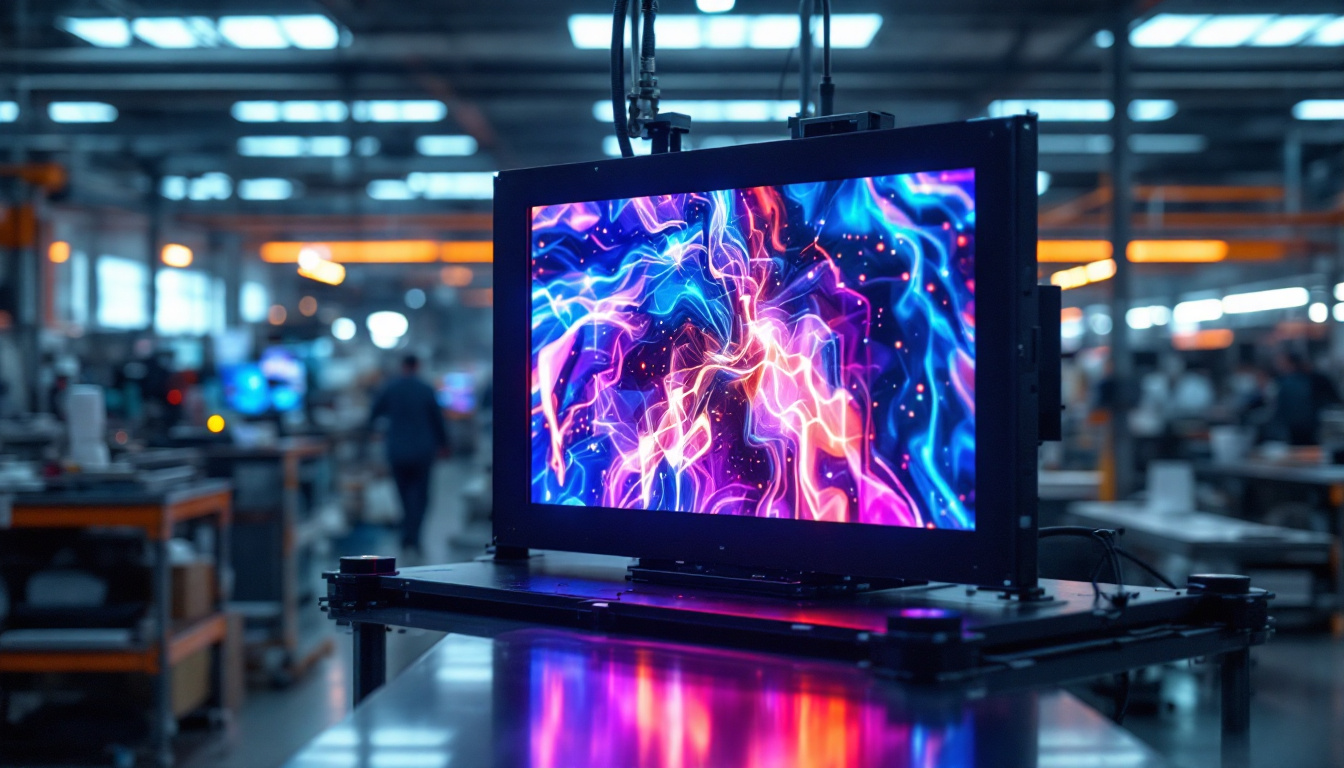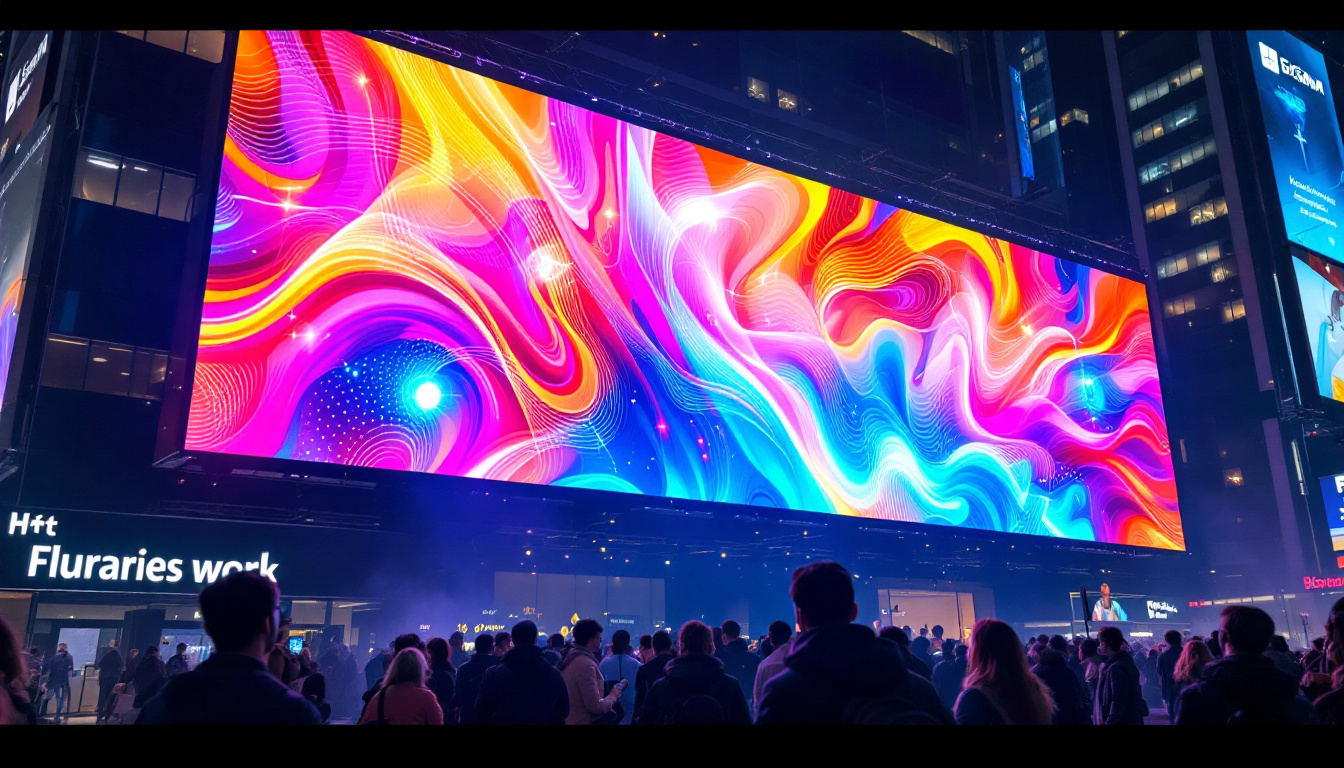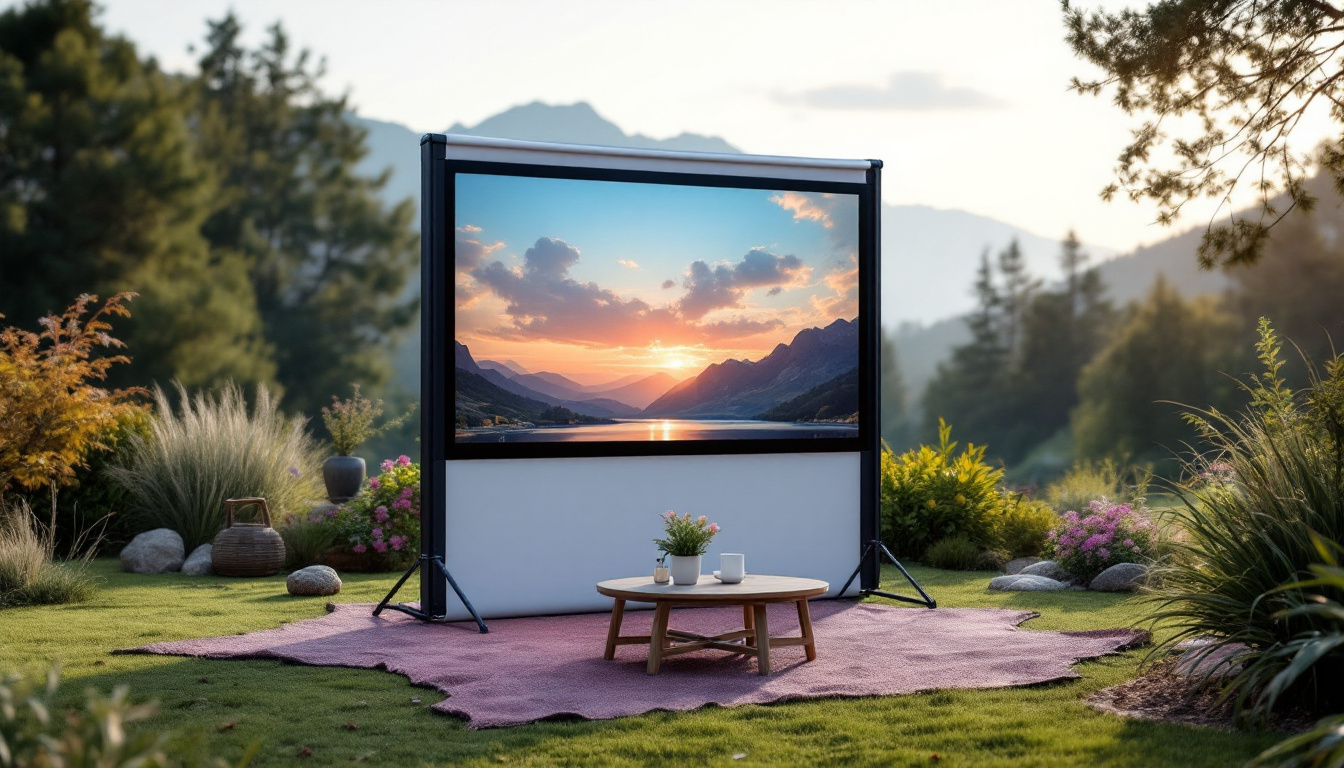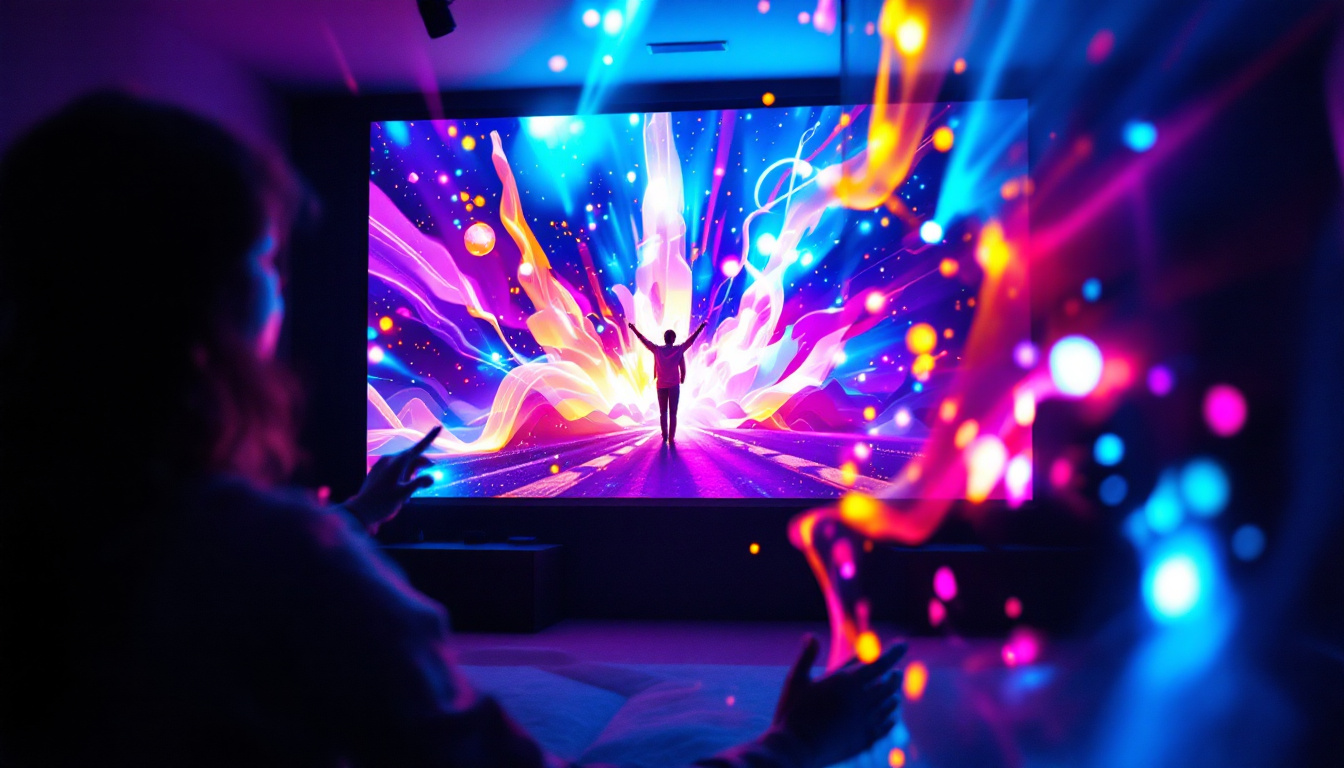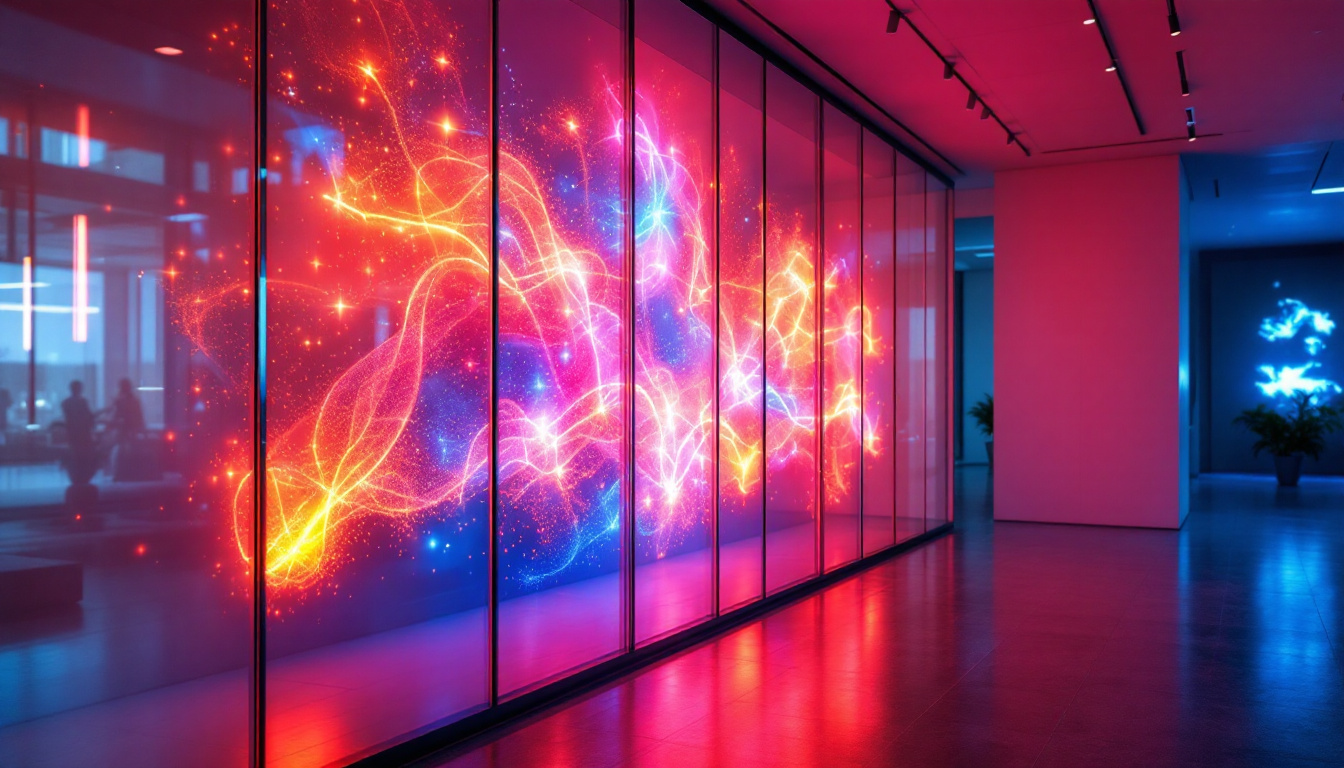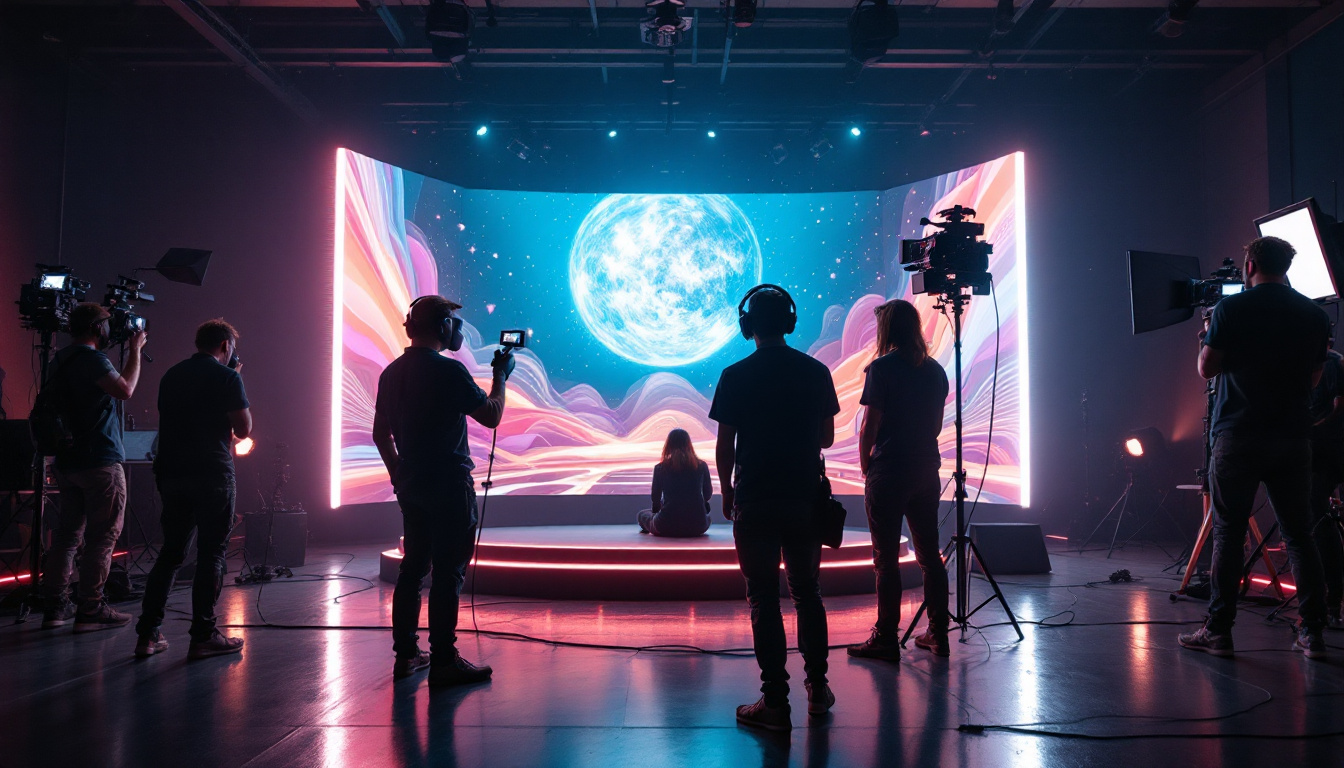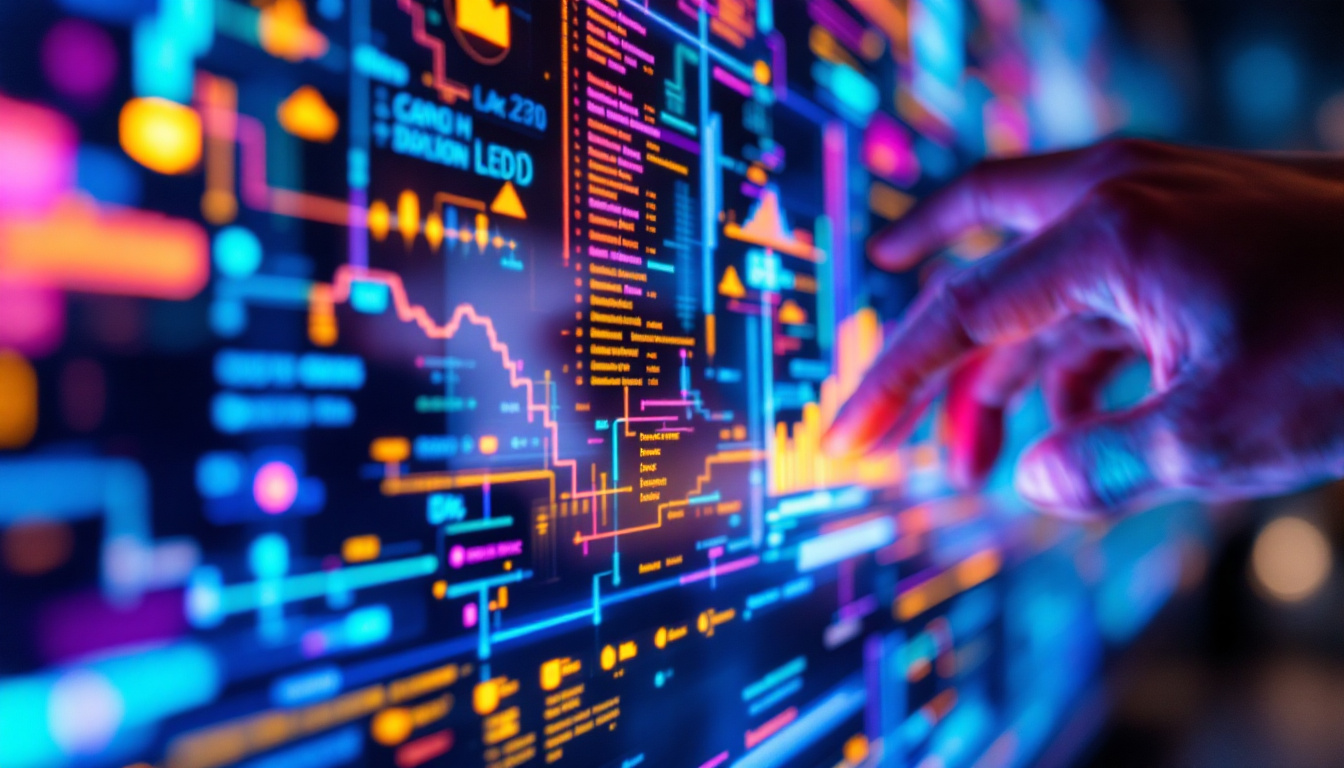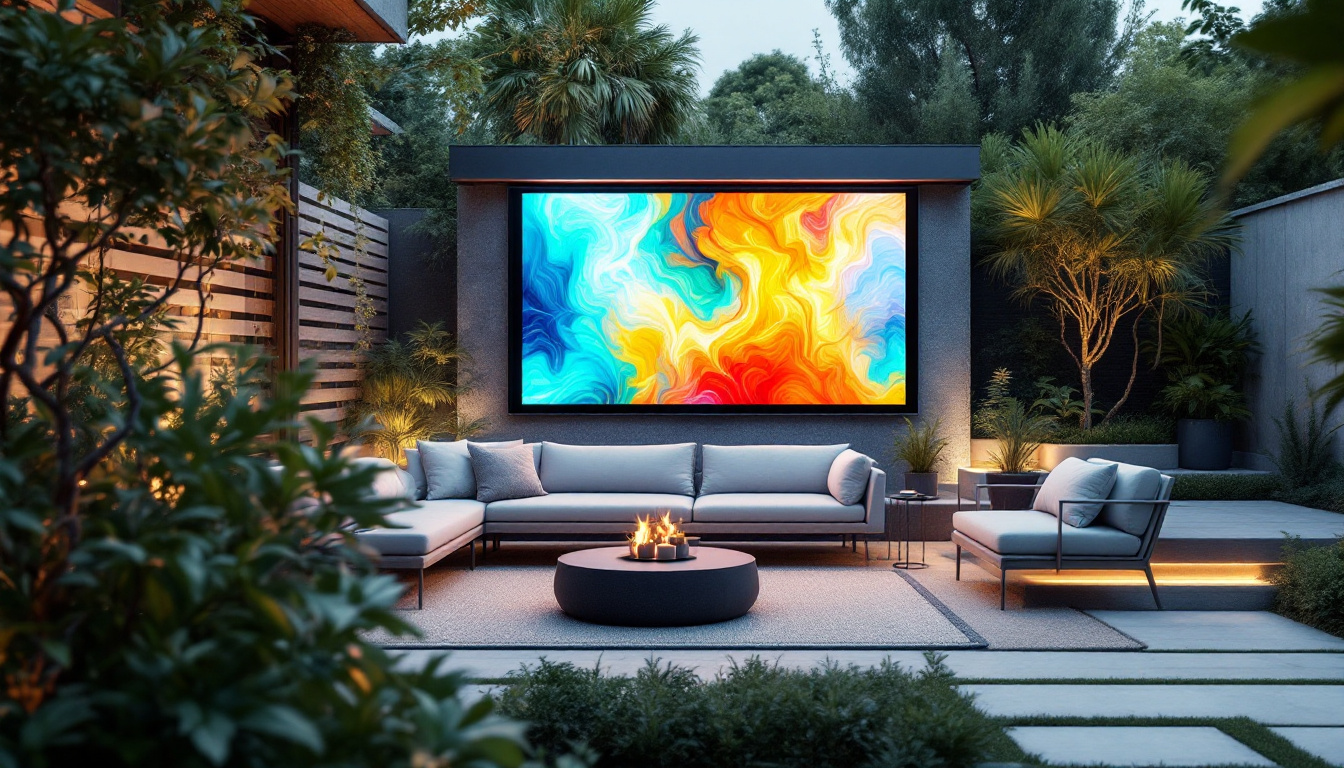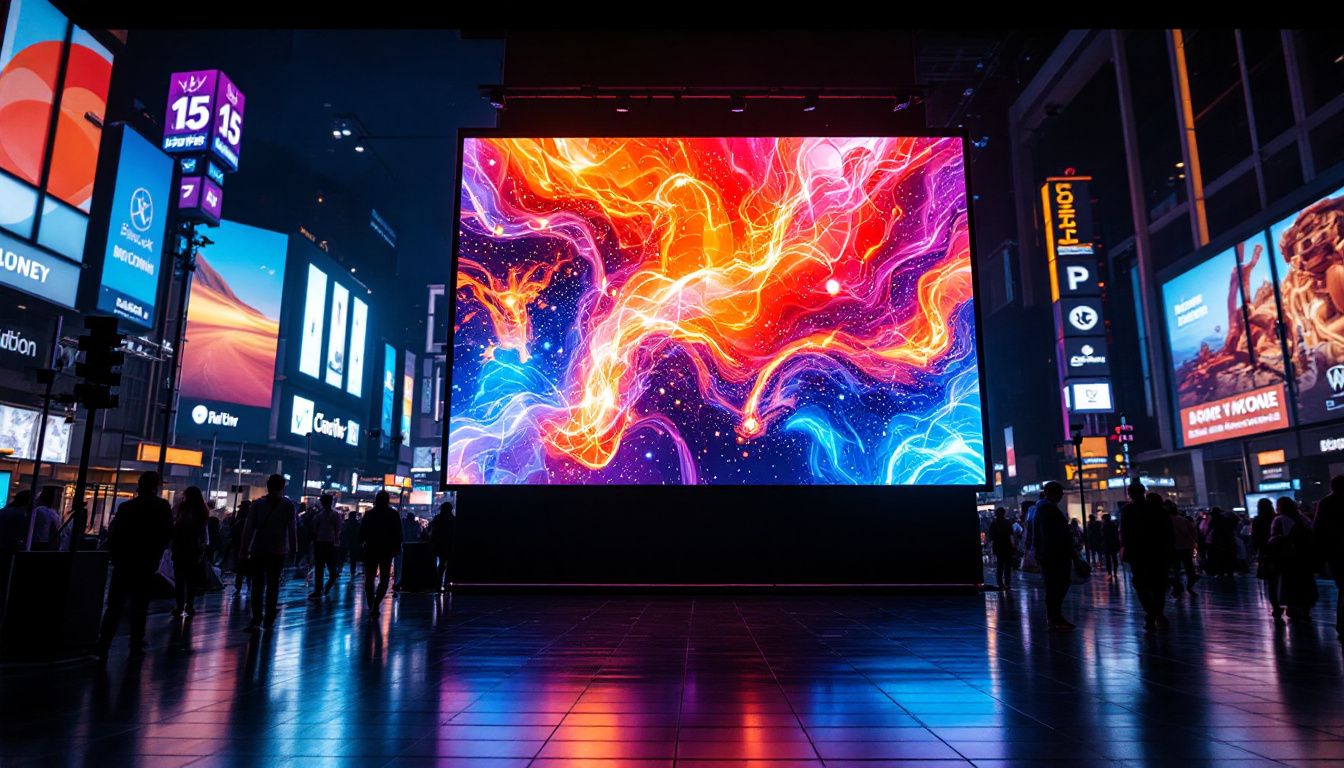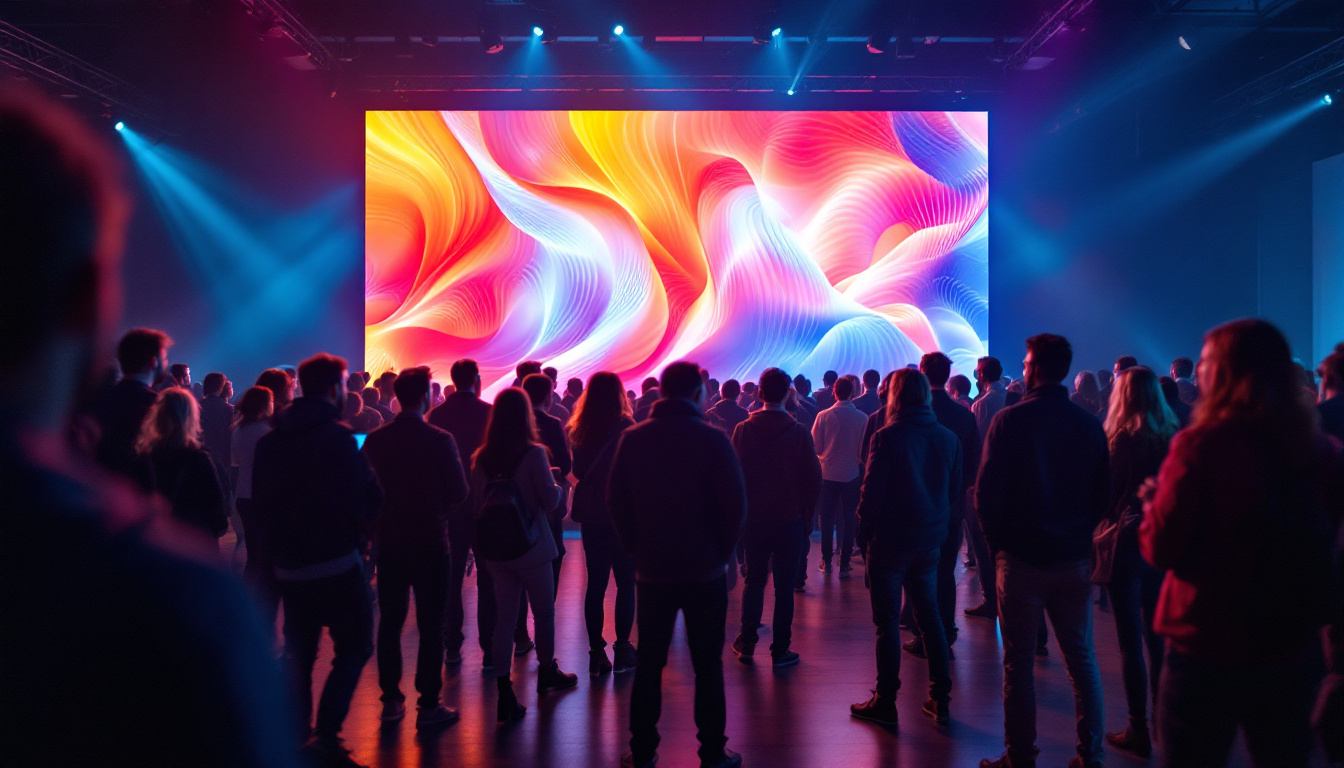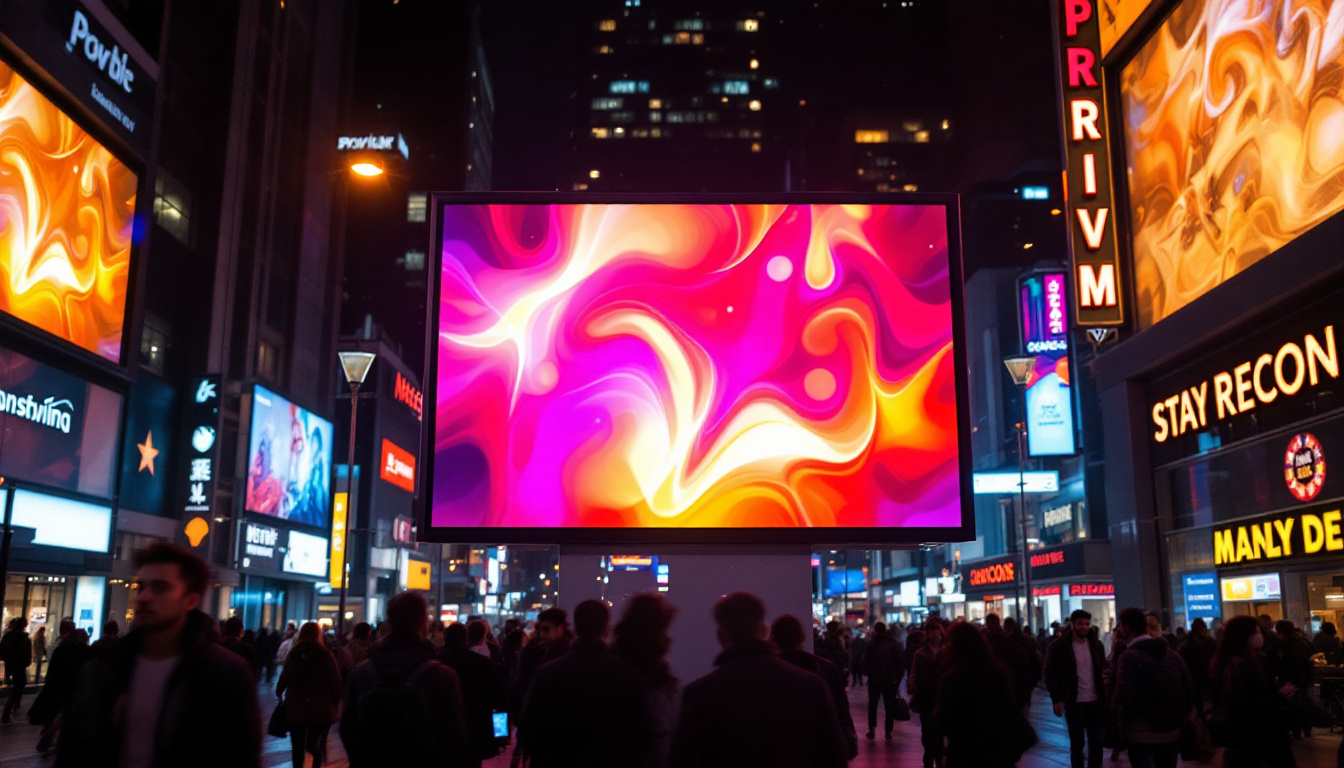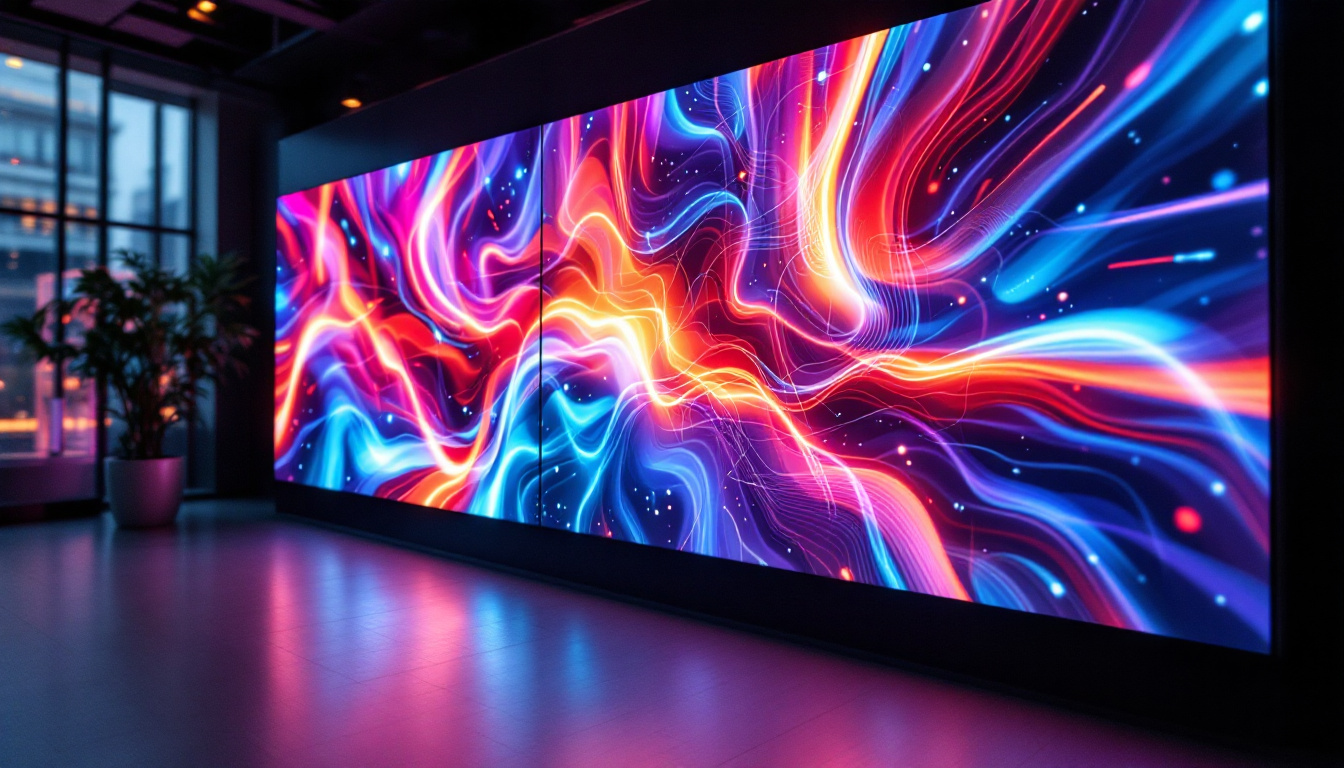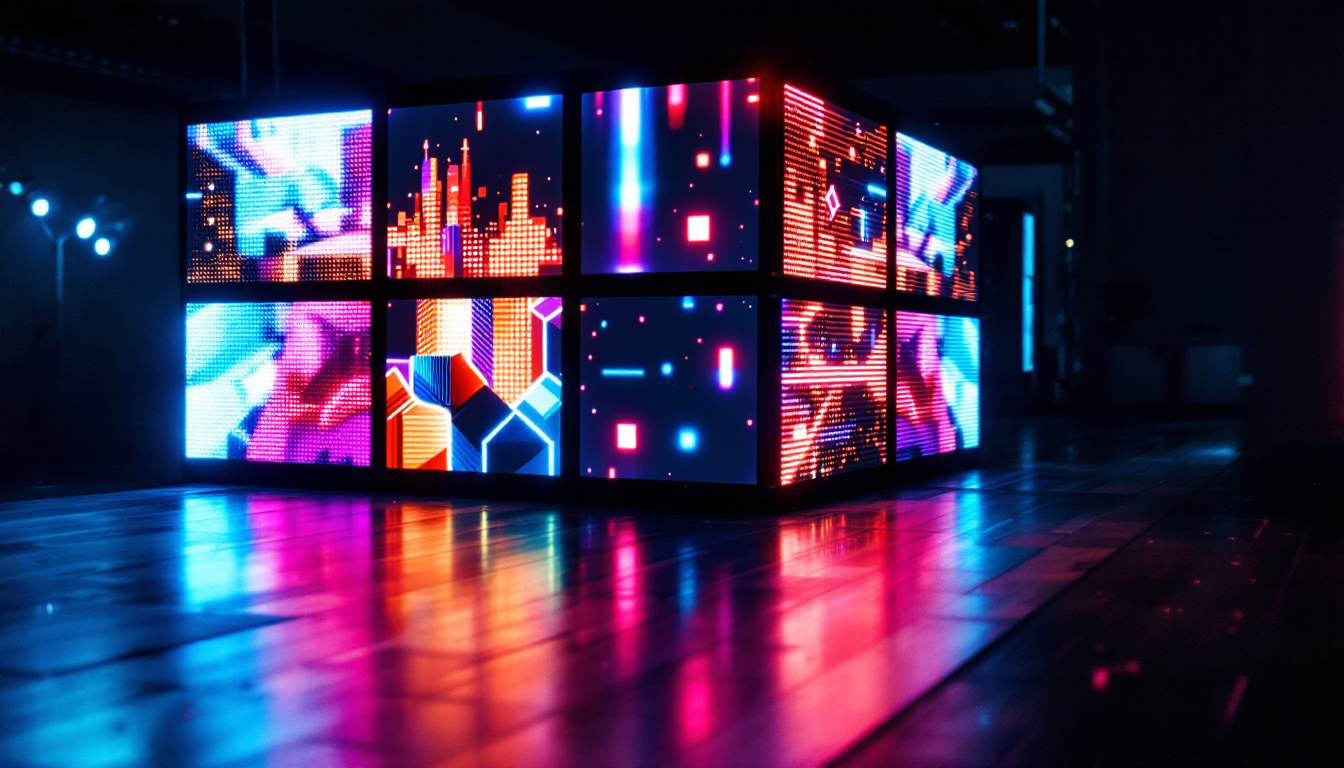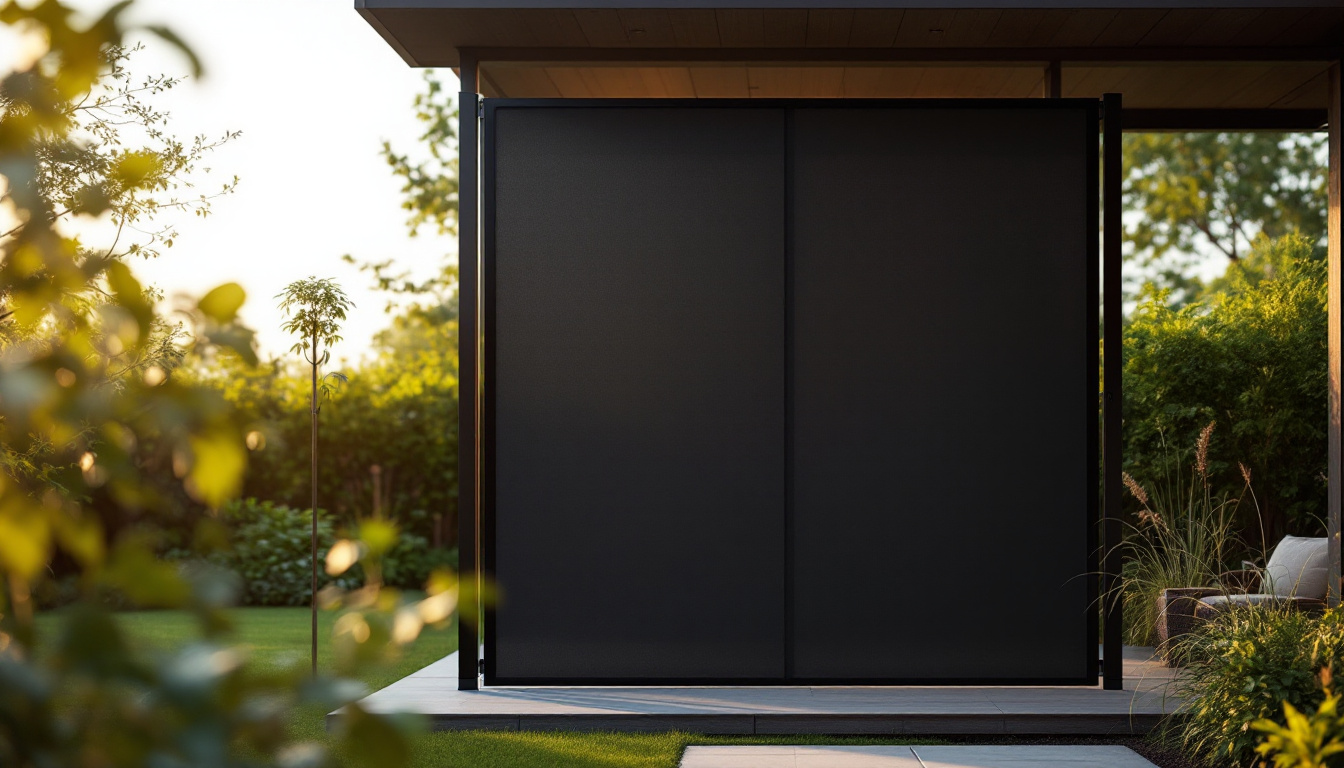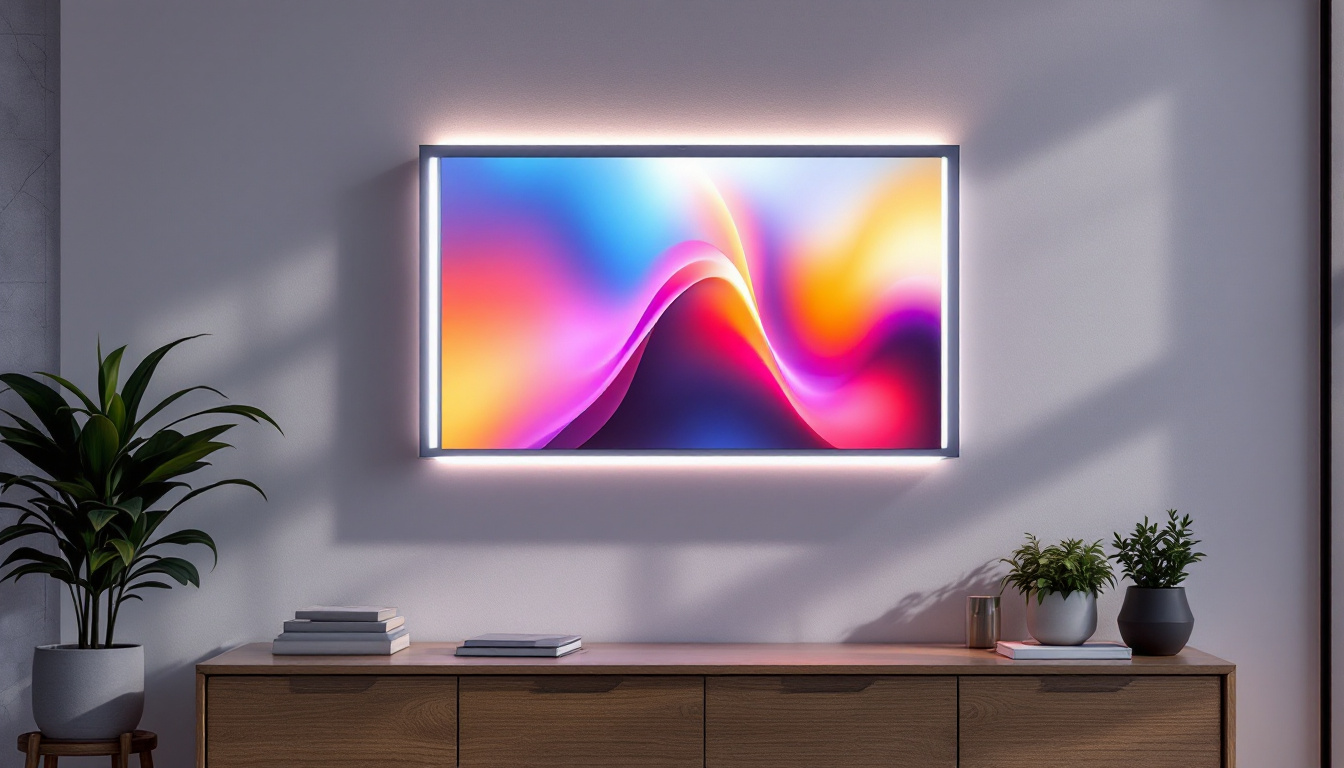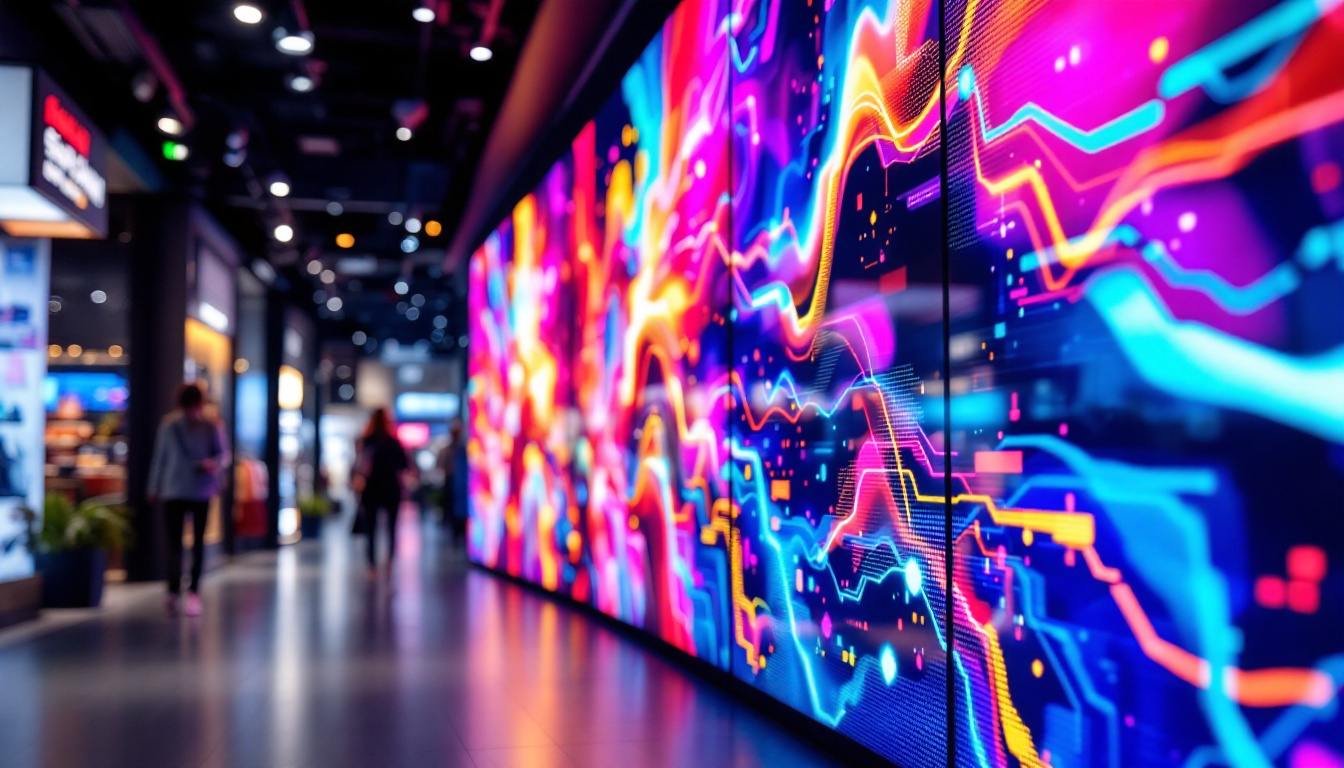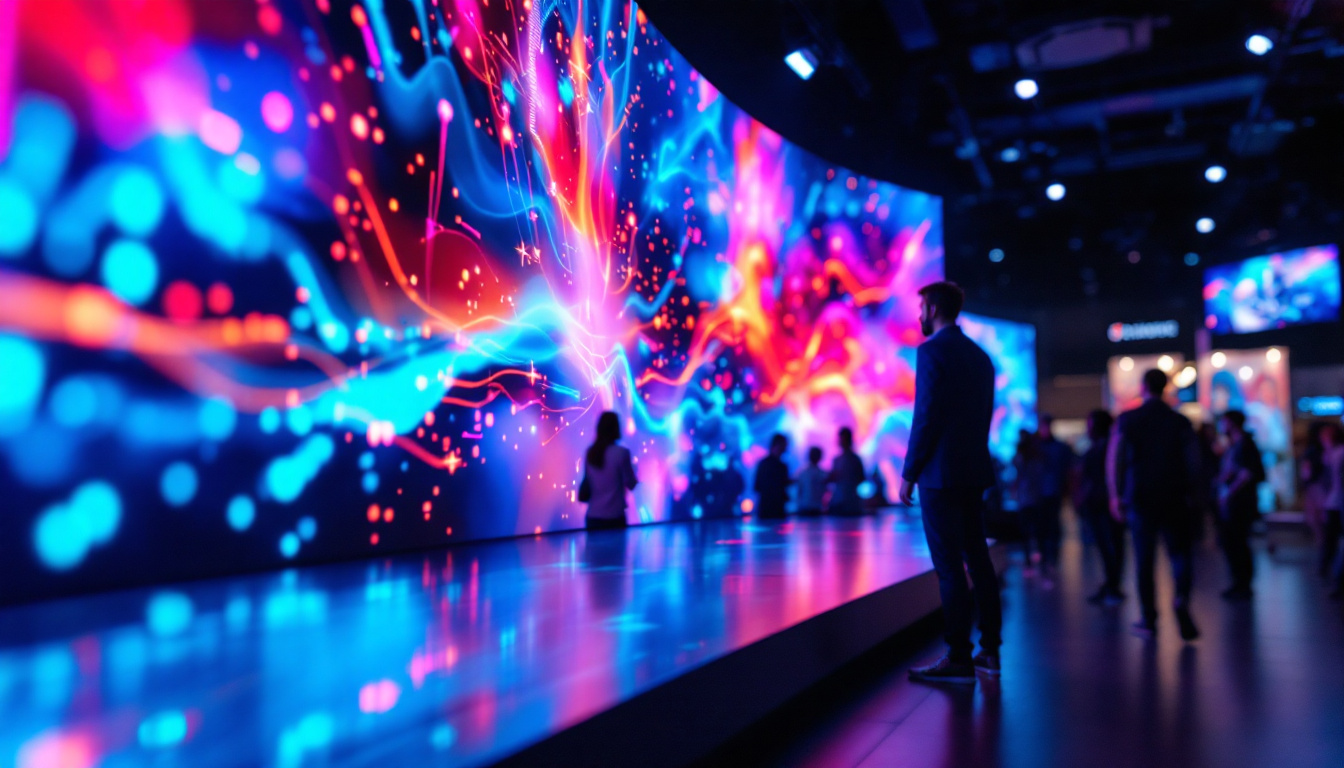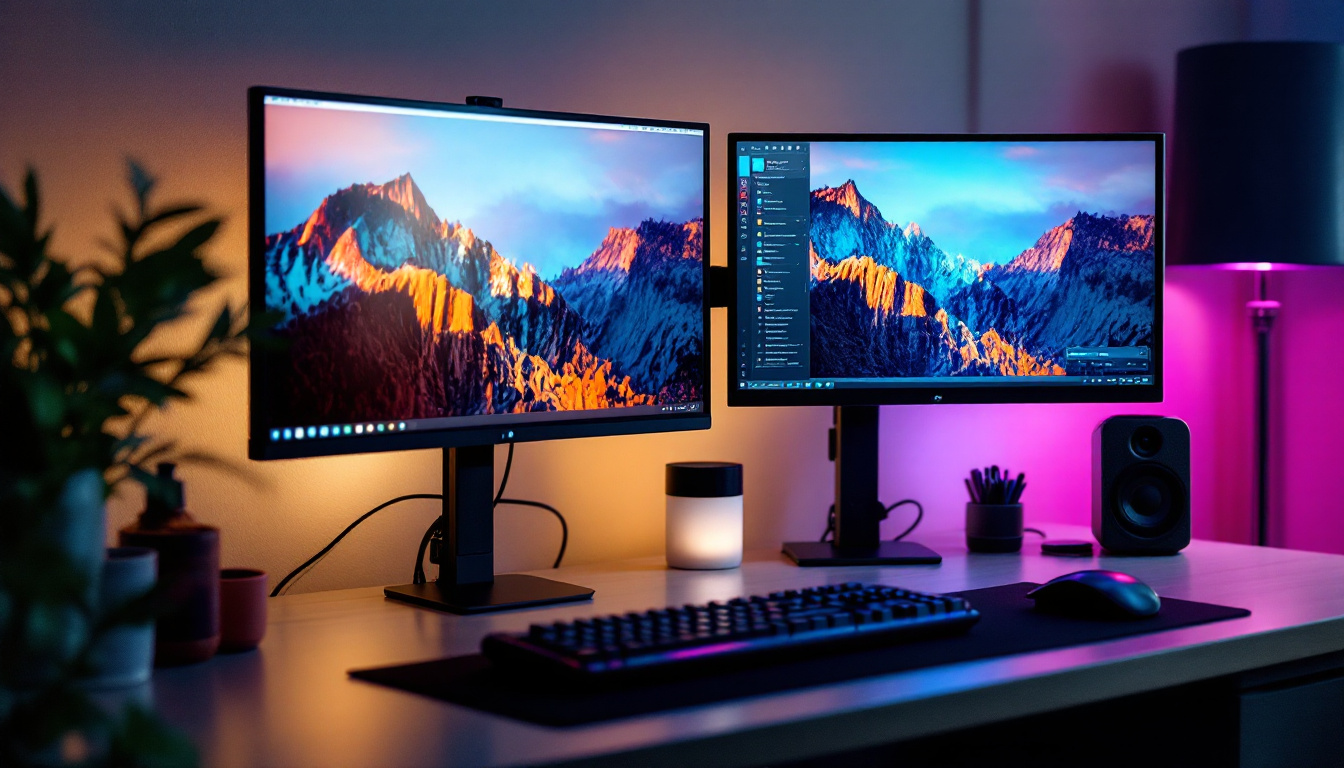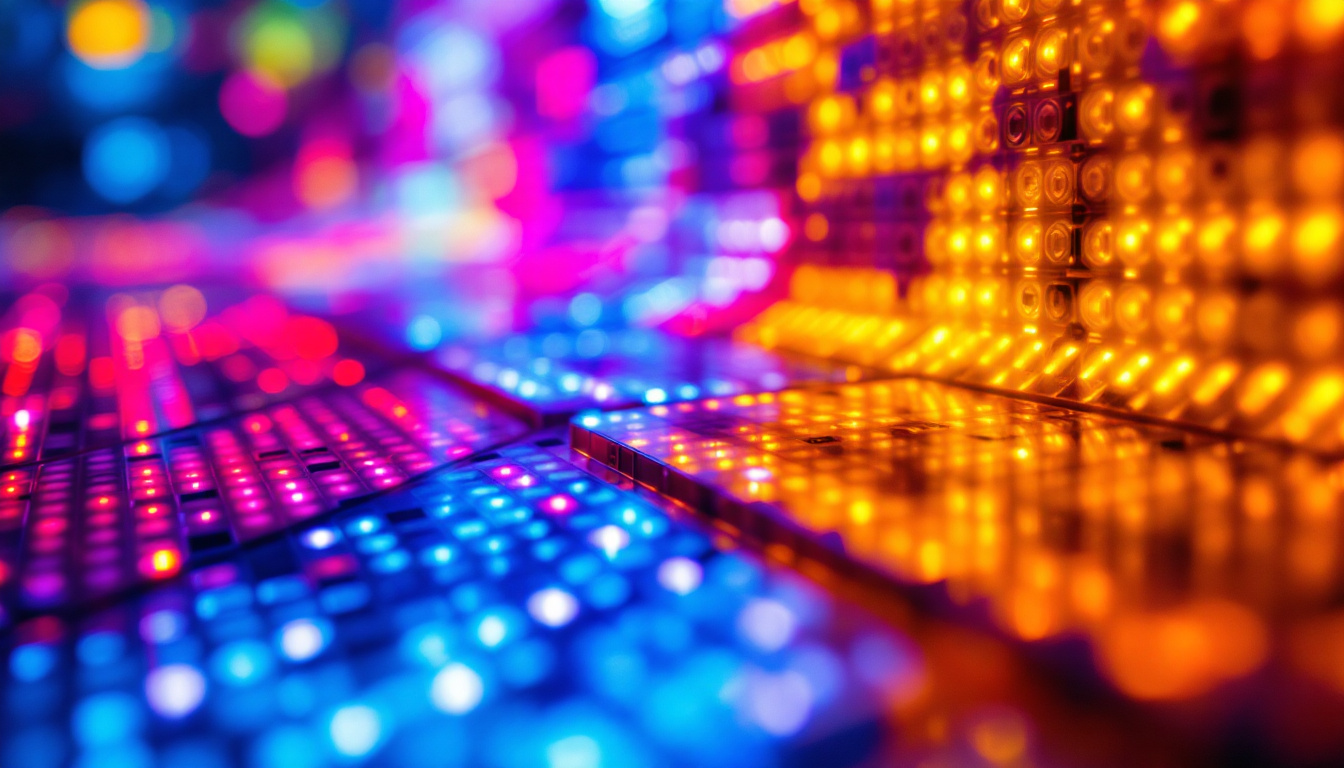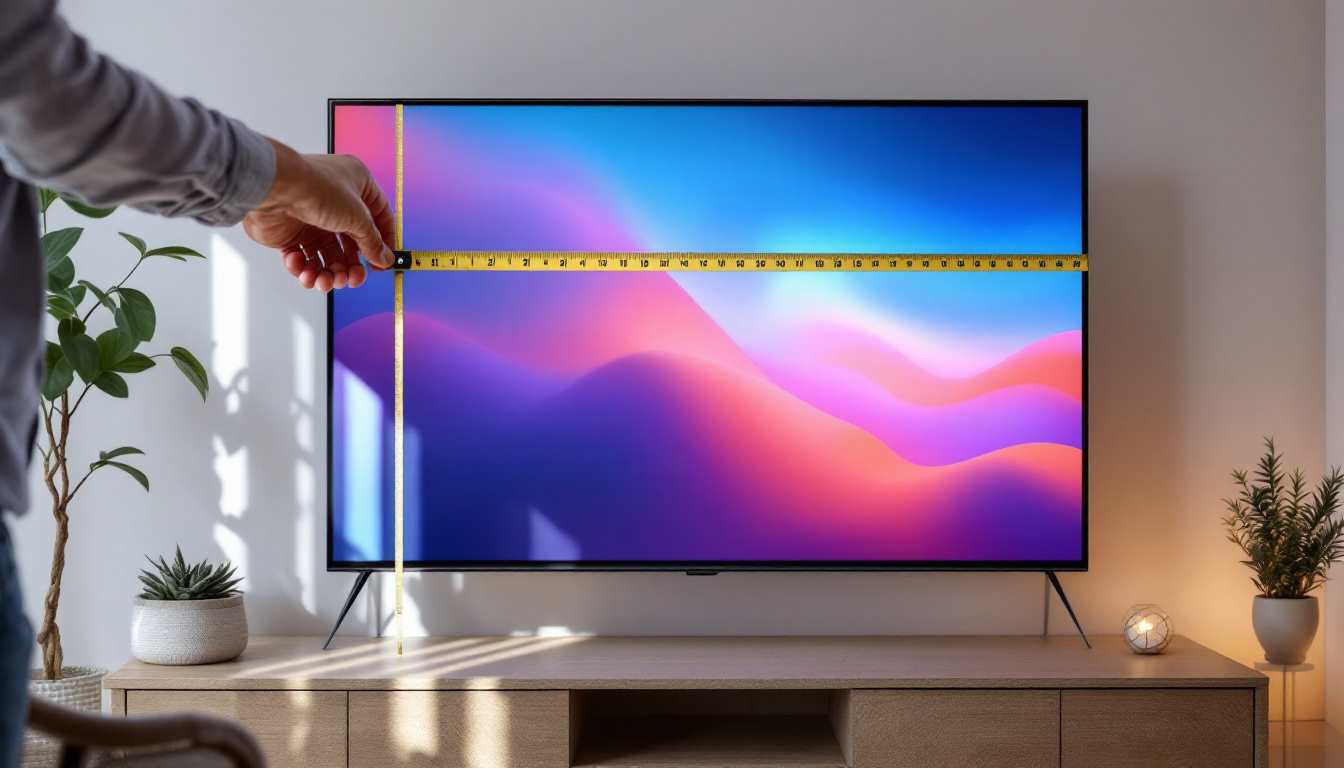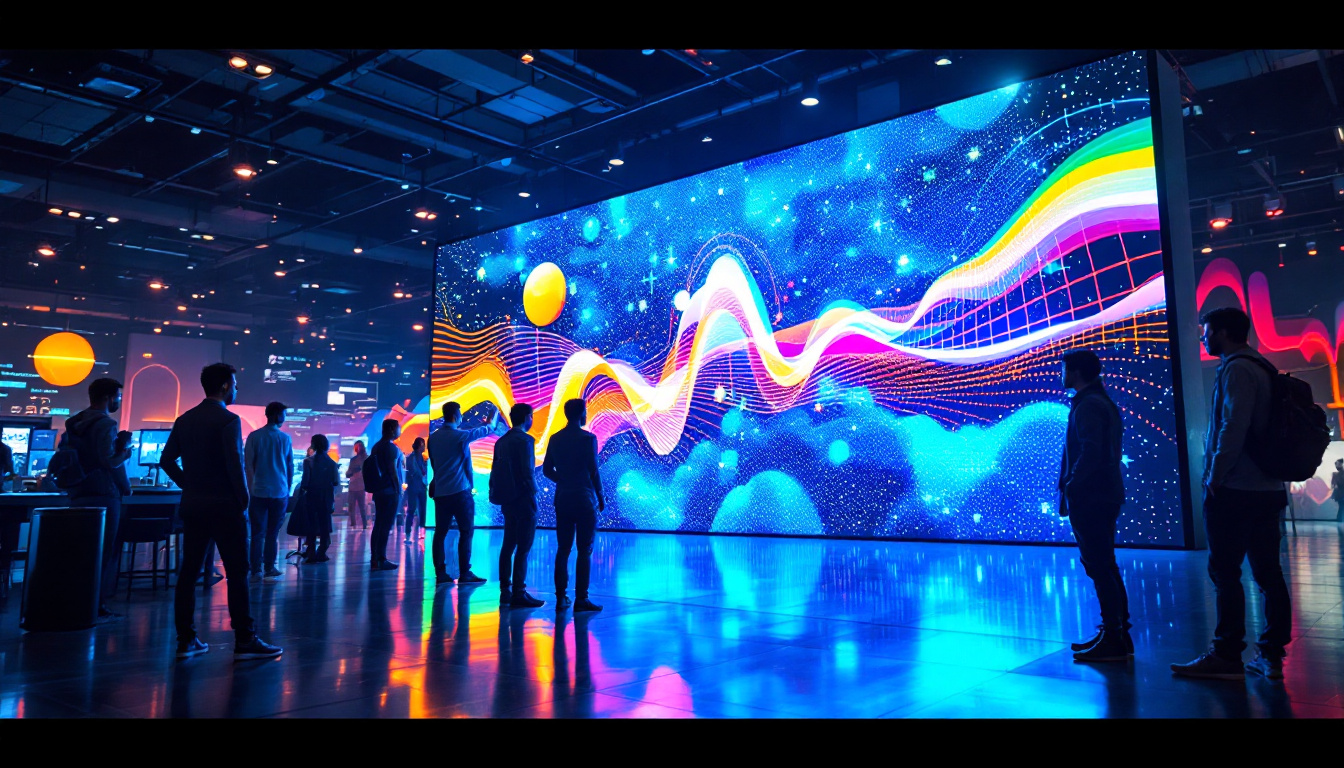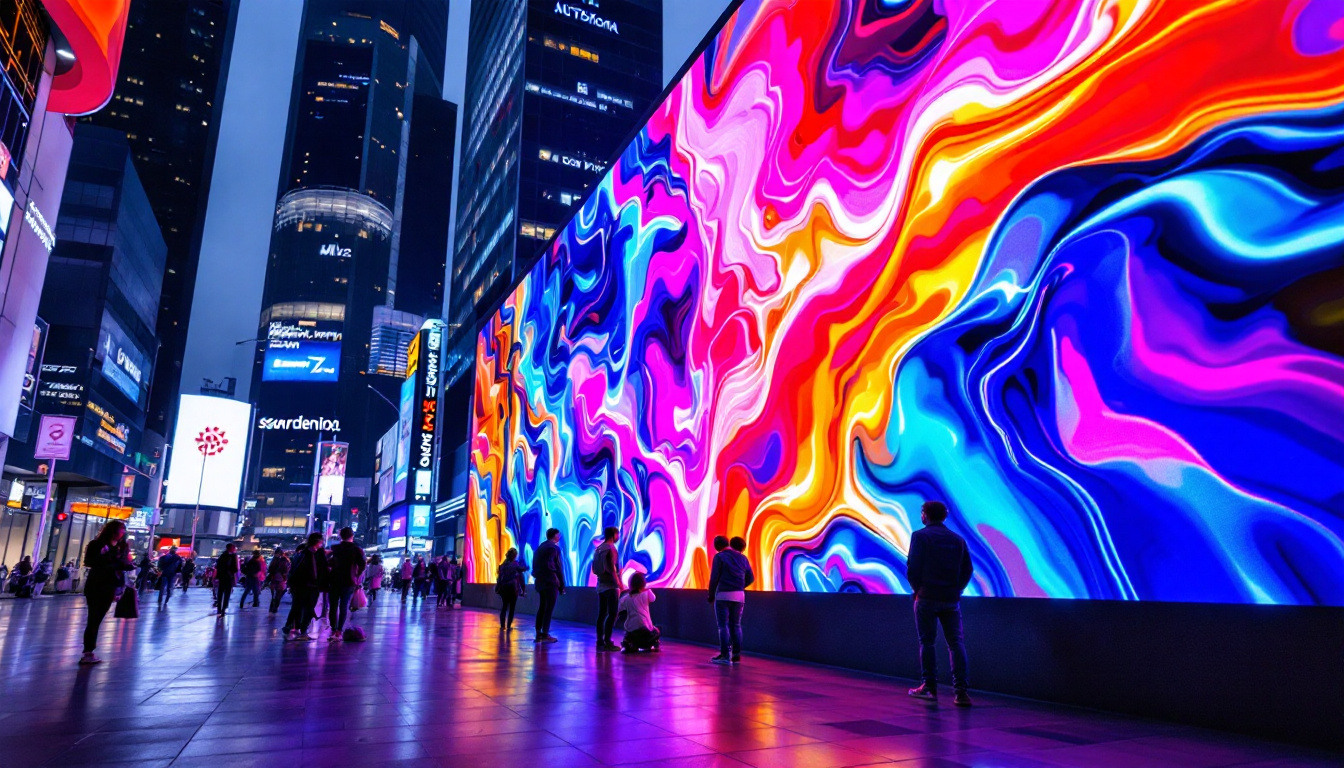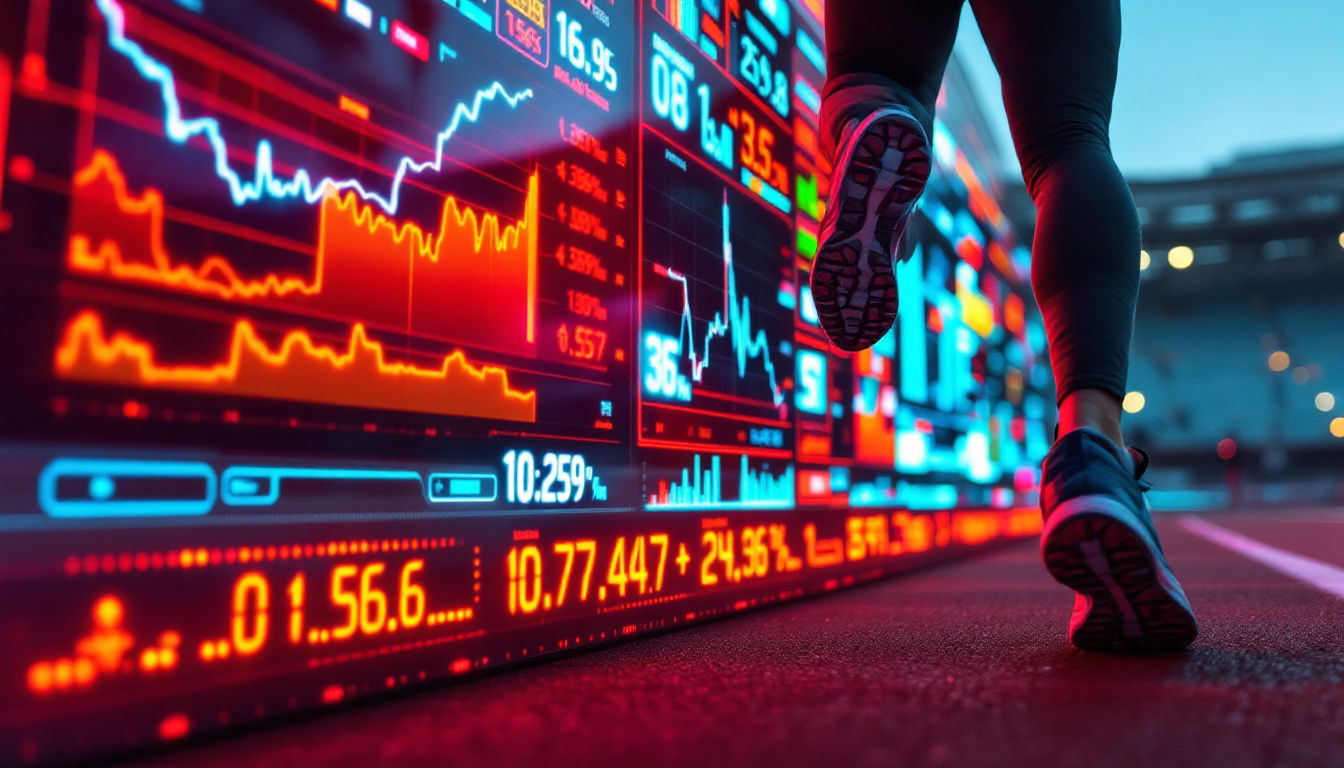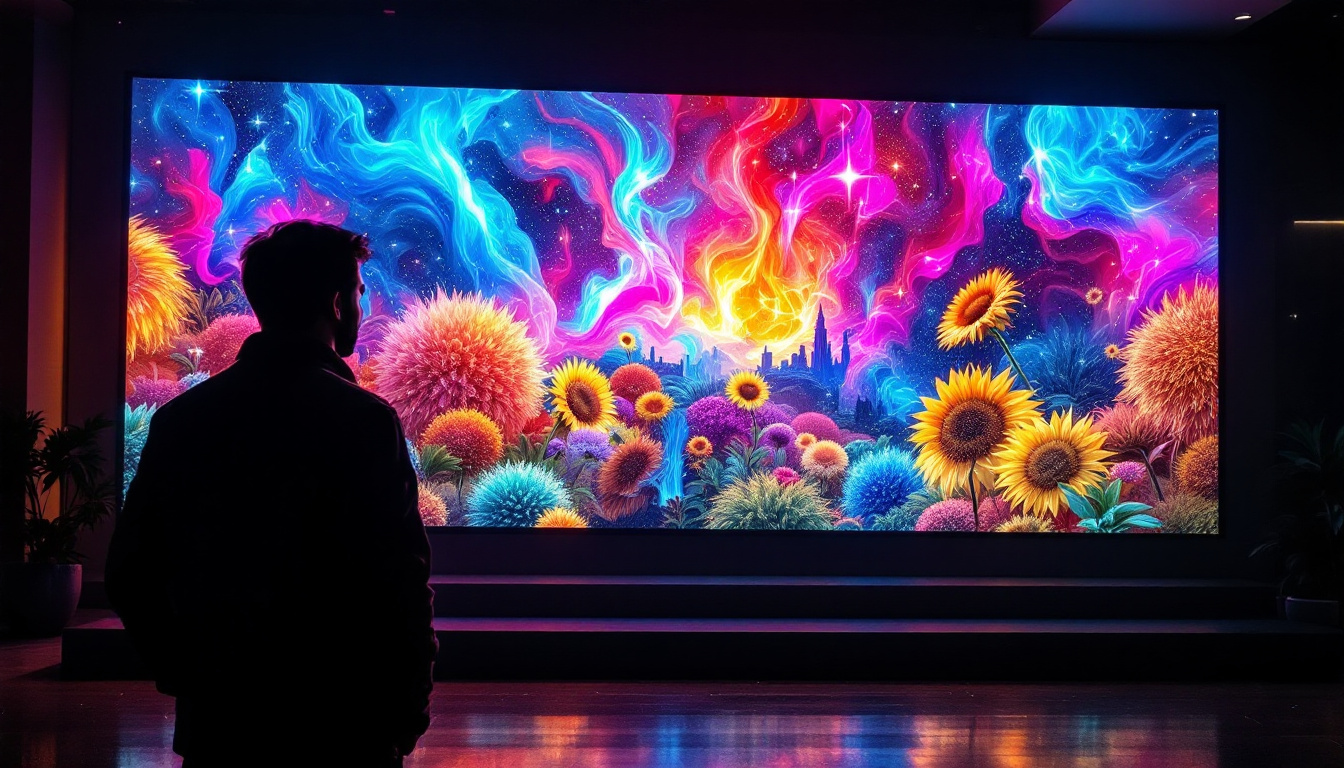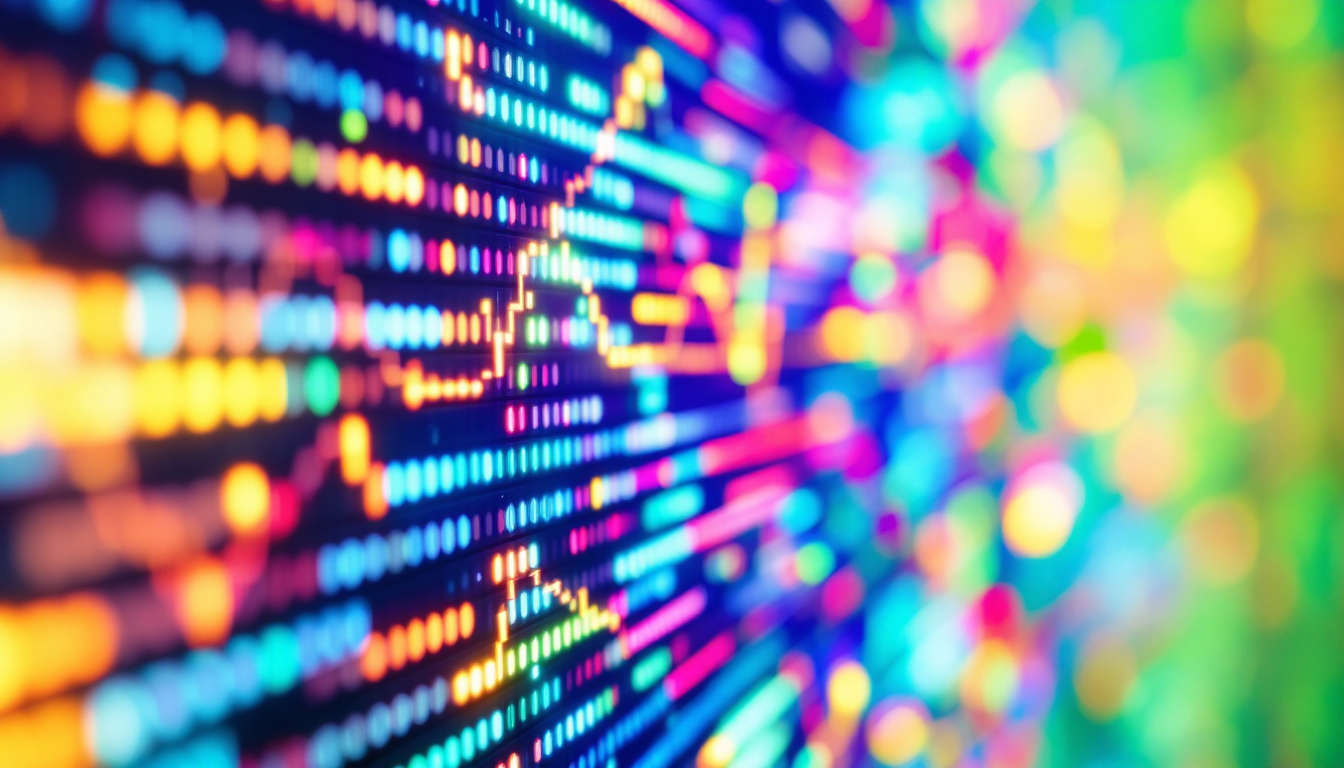In the modern world, LED displays have become ubiquitous, transforming the way information is communicated and consumed. From billboards to television screens, the technology behind LED displays is both fascinating and complex. This article aims to delve into the intricacies of LED displays, exploring their functionality, applications, and the manufacturing processes that bring them to life.
Understanding LED Technology
Light Emitting Diodes (LEDs) are semiconductor devices that emit light when an electric current passes through them. This fundamental principle is the cornerstone of LED technology, which has revolutionized various industries, including entertainment, advertising, and information dissemination. The shift from traditional incandescent bulbs to LED lighting has not only transformed how we illuminate our spaces but has also contributed significantly to energy conservation efforts worldwide.
The Basics of LED Operation
At its core, an LED is made of a chip that is encased in a plastic housing. When electricity flows through the chip, it excites the electrons, causing them to release energy in the form of light. The color of the emitted light depends on the materials used in the semiconductor chip. For instance, different combinations of gallium, arsenide, and phosphor can produce a spectrum of colors. This versatility allows for a wide range of applications, from the warm glow of residential lighting to the vibrant hues of stage lighting in concerts and performances.
This simple yet effective mechanism allows LEDs to be incredibly energy-efficient compared to traditional lighting sources. They consume less power and have a longer lifespan, making them a preferred choice for various applications. In fact, an LED can last up to 25 times longer than an incandescent bulb, which translates to fewer replacements and less waste. This longevity not only benefits consumers economically but also reduces the environmental impact associated with manufacturing and disposing of lighting products.
Types of LED Displays
LED displays come in various forms, each designed to serve specific purposes. The most common types include:
- Direct View LED Displays: These are made up of individual LED modules that create images directly. They are often used for large outdoor billboards and digital signage, providing high visibility and brightness even in direct sunlight.
- LED Backlit Displays: These displays use LEDs to illuminate an LCD panel from behind. They are commonly found in televisions and computer monitors, enhancing picture quality with improved contrast and color accuracy.
- Organic LED (OLED) Displays: Utilizing organic compounds that emit light, OLEDs are known for their vibrant colors and deep blacks. They are widely used in smartphones and high-end televisions, offering superior viewing angles and thinner designs compared to traditional LCDs.
Additionally, there are also MicroLED Displays, which are an emerging technology that promises even greater efficiency and color accuracy. MicroLEDs are made up of tiny, individual LEDs that can be controlled independently, allowing for stunning picture quality and the potential for flexible display configurations. This technology is still in its infancy but holds great promise for the future of visual displays, potentially leading to innovations in everything from wearable technology to large-scale immersive installations.
The Manufacturing Process of LED Displays
The production of LED displays is a meticulous process that involves several stages, from raw material selection to final assembly. Understanding this process provides insights into the quality and performance of the final product.
Raw Material Selection
The first step in manufacturing LED displays is selecting high-quality raw materials. The semiconductor materials, such as gallium nitride or indium gallium phosphide, are crucial for determining the efficiency and color output of the LEDs. Manufacturers often source these materials from specialized suppliers to ensure consistency and reliability.
Chip Fabrication
Once the raw materials are selected, the next stage is chip fabrication. This involves creating the semiconductor wafers that will eventually be cut into individual LED chips. The process includes several steps, such as doping (adding impurities to alter electrical properties), etching, and photolithography, which are essential for creating the intricate patterns required for the LEDs to function effectively.
Assembly and Testing
After the chips are fabricated, they are assembled into modules. This process includes mounting the chips onto circuit boards, connecting them with wires, and integrating other components like resistors and capacitors. Once assembled, each module undergoes rigorous testing to ensure functionality, color accuracy, and brightness levels. This quality control step is vital to maintain high standards and reduce defects in the final product.
Applications of LED Displays
LED displays have a wide range of applications across various sectors, each leveraging the unique advantages of this technology. From advertising to entertainment, the versatility of LED displays is evident.
Advertising and Marketing
One of the most prominent uses of LED displays is in advertising. Billboards and digital signage utilize vibrant LED screens to capture attention and convey messages effectively. The ability to change content dynamically allows advertisers to reach a broader audience and tailor messages to specific demographics or events.
Moreover, LED displays can be strategically placed in high-traffic areas, maximizing visibility and engagement. The bright colors and high contrast of LED technology make advertisements more eye-catching compared to traditional print media.
Entertainment and Events
In the entertainment industry, LED displays are essential for concerts, sports events, and theater productions. Large-scale LED screens are used to enhance the viewer experience by providing dynamic visuals that complement performances. The ability to display high-definition video and graphics in real-time allows for a more immersive experience.
Additionally, LED technology is widely used in stage lighting and effects, creating stunning visual displays that captivate audiences. The flexibility of LED panels enables creative designs that can transform any venue.
Information and Communication
LED displays are also employed in information dissemination, such as in transportation hubs, educational institutions, and corporate environments. Digital boards in airports and train stations provide real-time updates on schedules and delays, improving the flow of information for travelers.
In educational settings, LED displays can be used for presentations and interactive learning, making information more accessible and engaging for students. Corporate offices utilize LED screens for internal communications, displaying important announcements and data in a visually appealing manner.
Advantages of LED Displays
The popularity of LED displays can be attributed to several advantages they offer over traditional display technologies. Understanding these benefits helps to appreciate why LED technology has become a dominant force in the display market.
Energy Efficiency
One of the most significant advantages of LED displays is their energy efficiency. Compared to traditional incandescent or fluorescent lighting, LEDs consume significantly less power, leading to lower energy bills and a reduced carbon footprint. This energy efficiency is particularly beneficial for large installations, such as outdoor billboards, where power consumption can be substantial.
Longevity and Durability
LED displays have an impressive lifespan, often lasting tens of thousands of hours before their brightness begins to diminish. This longevity reduces the need for frequent replacements, making them a cost-effective solution in the long run. Additionally, LEDs are more durable and resistant to shock and vibration than traditional display technologies, making them ideal for outdoor and high-traffic environments.
High Brightness and Contrast
LED displays are known for their high brightness levels and excellent contrast ratios. This capability allows them to be visible even in direct sunlight, making them suitable for outdoor applications. The vibrant colors and sharp images produced by LED technology enhance the viewing experience, whether in advertising, entertainment, or information displays.
Challenges in LED Display Manufacturing
Despite their advantages, the manufacturing of LED displays is not without challenges. Understanding these hurdles is crucial for manufacturers aiming to improve quality and efficiency.
Cost of Raw Materials
The cost of raw materials for LED manufacturing can fluctuate significantly, impacting overall production costs. High-quality semiconductor materials are essential for creating efficient and reliable LEDs, but their prices can vary based on market demand and availability. Manufacturers must navigate these fluctuations to maintain profitability while ensuring product quality.
Technological Advancements
The rapid pace of technological advancements in the display industry poses a challenge for manufacturers. Staying competitive requires continuous investment in research and development to innovate and improve existing products. This can strain resources, especially for smaller manufacturers who may lack the financial backing of larger corporations.
Environmental Concerns
As with many electronic products, environmental concerns related to LED displays are becoming increasingly relevant. The disposal of electronic waste and the use of hazardous materials in manufacturing processes raise questions about sustainability. Manufacturers are under pressure to adopt eco-friendly practices and develop products that minimize their environmental impact.
The Future of LED Displays
The future of LED displays looks promising, with ongoing advancements in technology and increasing applications across various sectors. As manufacturers continue to innovate, several trends are likely to shape the industry.
Smart LED Displays
With the rise of the Internet of Things (IoT), smart LED displays are becoming more prevalent. These displays can connect to the internet, allowing for real-time content updates and remote management. This capability enhances the flexibility and functionality of LED displays, making them even more valuable for advertisers and information providers.
Improved Color Accuracy and Resolution
Future advancements are expected to focus on improving color accuracy and resolution in LED displays. Higher pixel densities and enhanced color reproduction will provide even more stunning visuals, catering to the growing demand for high-quality displays in entertainment and advertising.
Sustainability Initiatives
As environmental concerns continue to grow, the LED display industry is likely to see a shift towards more sustainable practices. Manufacturers may focus on using eco-friendly materials, improving energy efficiency, and developing recycling programs for electronic waste. This shift will not only benefit the environment but also appeal to consumers who prioritize sustainability.
Conclusion
LED displays have transformed the landscape of visual communication, offering a versatile and efficient solution for a wide range of applications. Understanding the technology, manufacturing processes, and challenges associated with LED displays provides valuable insights into their significance in today’s world.
As the industry continues to evolve, the future of LED displays holds exciting possibilities. With advancements in technology, a focus on sustainability, and the integration of smart features, LED displays are poised to remain at the forefront of visual communication for years to come.
Discover LumenMatrix’s Innovative LED Display Solutions
Ready to elevate your visual communication with cutting-edge technology? LumenMatrix offers a comprehensive range of LED display modules tailored to your needs. From captivating Indoor and Outdoor LED Wall Displays to dynamic Vehicle and Sports LED Displays, our solutions are designed to enhance brand visibility and create immersive visual experiences. Embrace the future with our Custom, All-in-One, and Transparent LED Displays, and see how our commitment to innovation can revolutionize your message delivery. Check out LumenMatrix LED Display Solutions today and transform the way you engage with your audience.

